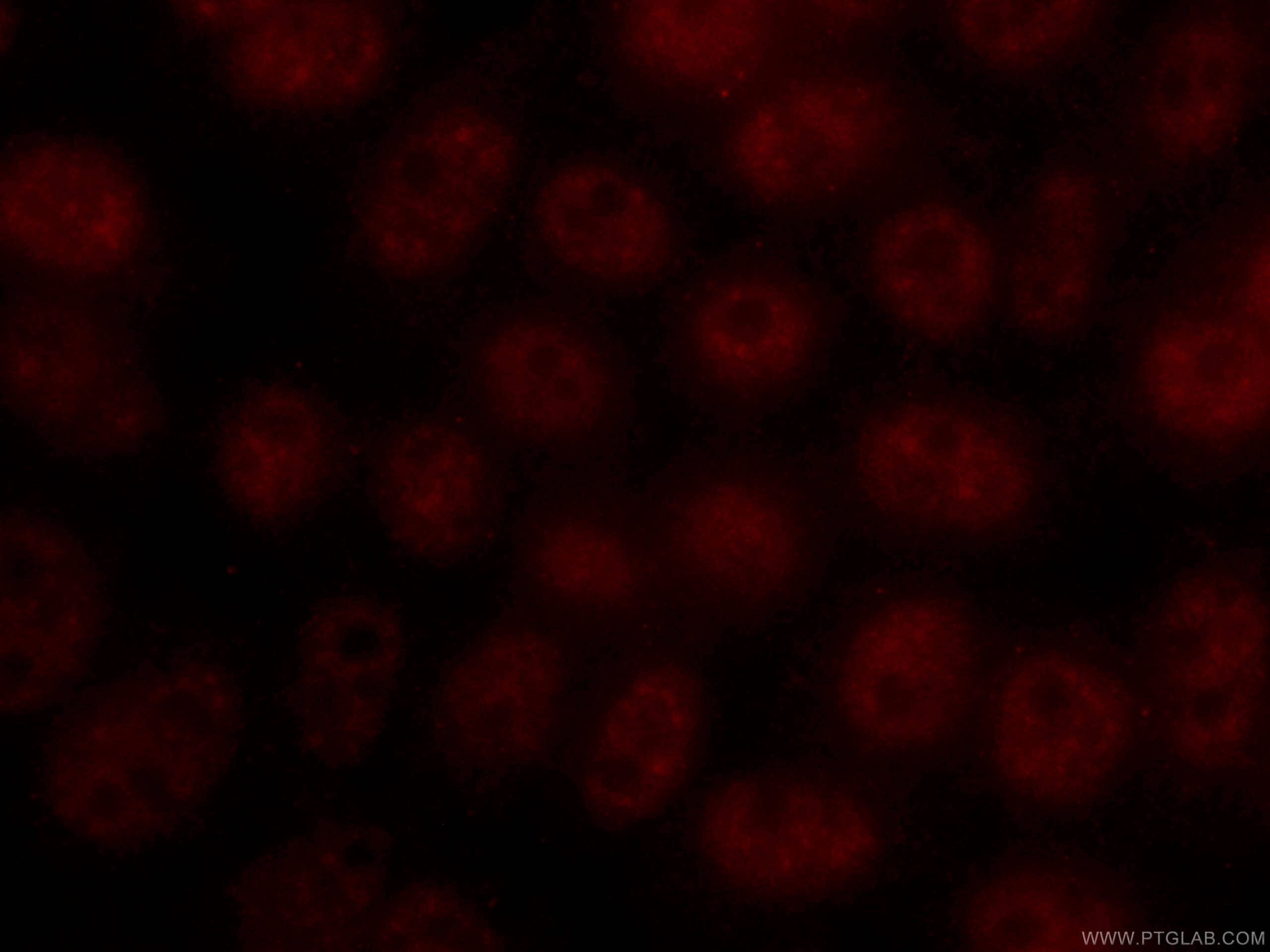TFIP11 Monoklonaler Antikörper
TFIP11 Monoklonal Antikörper für IF
Wirt / Isotyp
Maus / IgG2b
Getestete Reaktivität
human
Anwendung
IF
Konjugation
CoraLite®594 Fluorescent Dye
CloneNo.
1A1C8
Kat-Nr. : CL594-66114
Synonyme
Galerie der Validierungsdaten
Geprüfte Anwendungen
| Erfolgreiche Detektion in IF | HeLa-Zellen |
Empfohlene Verdünnung
| Anwendung | Verdünnung |
|---|---|
| Immunfluoreszenz (IF) | IF : 1:50-1:500 |
| It is recommended that this reagent should be titrated in each testing system to obtain optimal results. | |
| Sample-dependent, check data in validation data gallery | |
Produktinformation
CL594-66114 bindet in IF TFIP11 und zeigt Reaktivität mit human
| Getestete Reaktivität | human |
| Wirt / Isotyp | Maus / IgG2b |
| Klonalität | Monoklonal |
| Typ | Antikörper |
| Immunogen | TFIP11 fusion protein Ag5821 |
| Vollständiger Name | tuftelin interacting protein 11 |
| Berechnetes Molekulargewicht | 97 kDa |
| Beobachtetes Molekulargewicht | 97 kDa |
| GenBank-Zugangsnummer | BC033080 |
| Gene symbol | TFIP11 |
| Gene ID (NCBI) | 24144 |
| Konjugation | CoraLite®594 Fluorescent Dye |
| Excitation/Emission maxima wavelengths | 588 nm / 604 nm |
| Form | Liquid |
| Reinigungsmethode | Protein-A-Reinigung |
| Lagerungspuffer | BS mit 50% Glyzerin, 0,05% Proclin300, 0,5% BSA, pH 7,3. |
| Lagerungsbedingungen | Bei -20°C lagern. Vor Licht schützen. Nach dem Versand ein Jahr stabil. Aliquotieren ist bei -20oC Lagerung nicht notwendig. 20ul Größen enthalten 0,1% BSA. |
Hintergrundinformationen
TFIP11, also named as Tuftelin-interacting protein 11 or Septin and tuftelin-interacting protein 1, is a 837 amino acid protein, which contains one G-patch domain and belongs to the TFP11/STIP family. TFIP11 may localizes in the nucleus and cytoplasm. TFIP11 is involved in pre-mRNA splicing, specifically in spliceosome disassembly during late-stage splicing events. TFIP11 may play a role in the differentiation of ameloblasts and odontoblasts or in the forming of the enamel extracellular matrix.
Protokolle
| Produktspezifische Protokolle | |
|---|---|
| IF protocol for CL594 TFIP11 antibody CL594-66114 | Protokoll herunterladen |
| Standard-Protokolle | |
|---|---|
| Klicken Sie hier, um unsere Standardprotokolle anzuzeigen |


